This post about Sarajevo food was contributed by Anna from Expert World Travel.
If you’re travelling to Sarajevo, then you should prepare yourself to taste a lot of different foods. And return home with a few extra pounds.
Like in many European countries, food plays a big role in the tradition and culture of Bosnia and Herzegovina.
So much so that there even exists a term to describe a person who loves to eat so much that they sometimes forget to breathe. They are called “poguzije”
And after you’ve tasted all the foods that I’m going to tell you about, you might just become a poguzija yourself!
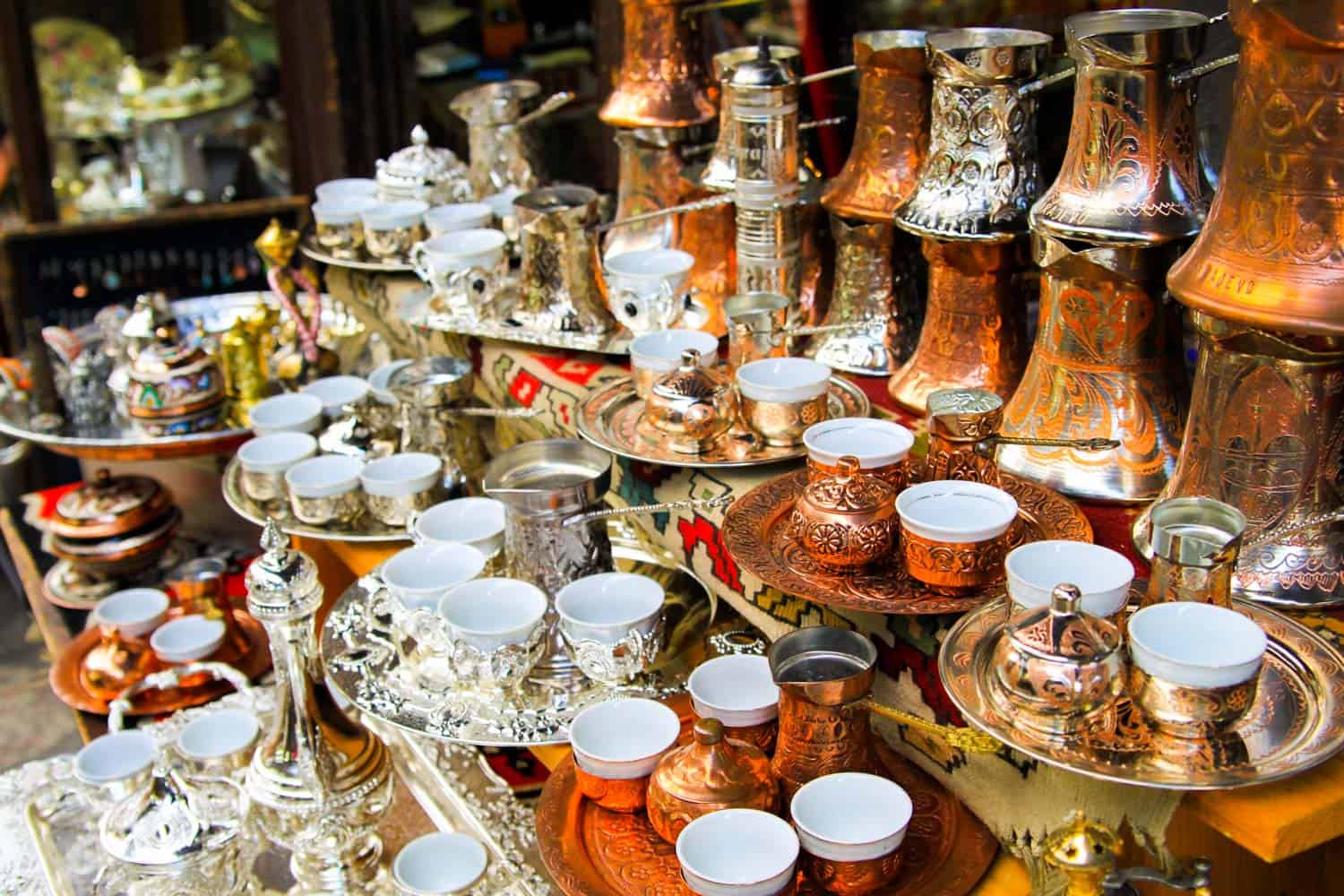
Influences on Bosnian Cuisine
There’s a lot of variety in the cuisine of Bosnia and Herzegovina. It’s based on traditional Yugoslavian food, with plenty of Mediterranean and Ottoman influences.
Lots of dishes will have the same name as some traditional Turkish dishes, but with a distinctively Sarajevan twist.
And because Islam is the dominant religion in the country, you will have a hard time finding pork in any of the dishes.
Most foods that are made with meat are made with beef, lamb, veal or chicken.
The cooked dishes are light, because they are usually left to cook for several hours on low heat, and in lots of water and spices. And all of them will have “saft” – the sauce that the dish has been cooking in.
That sauce is usually the best part of the meal, as it contains the flavors of every single elements that’s been cooking in it for the past 6 hours.
When in Sarajevo, you are encouraged to take a piece of bread and dip it in the sauce. You’ll taste all the best flavors in the sauce, and you’ll wind up cleaning your plate spotless.
Another thing to note is that there is a lot of meat in Bosnian cuisine.
Turns out that they really like stuffing vegetables with minced meat, and there are several different kinds of dishes that are made like this.
As for the desserts, lots of them have one thing in common – they are soaked in agda. Agda is just sugar boiled with water. It is very sweet and has a rather thick consistency.
But it makes all the desserts soft and really juicy, and just generally delicious.
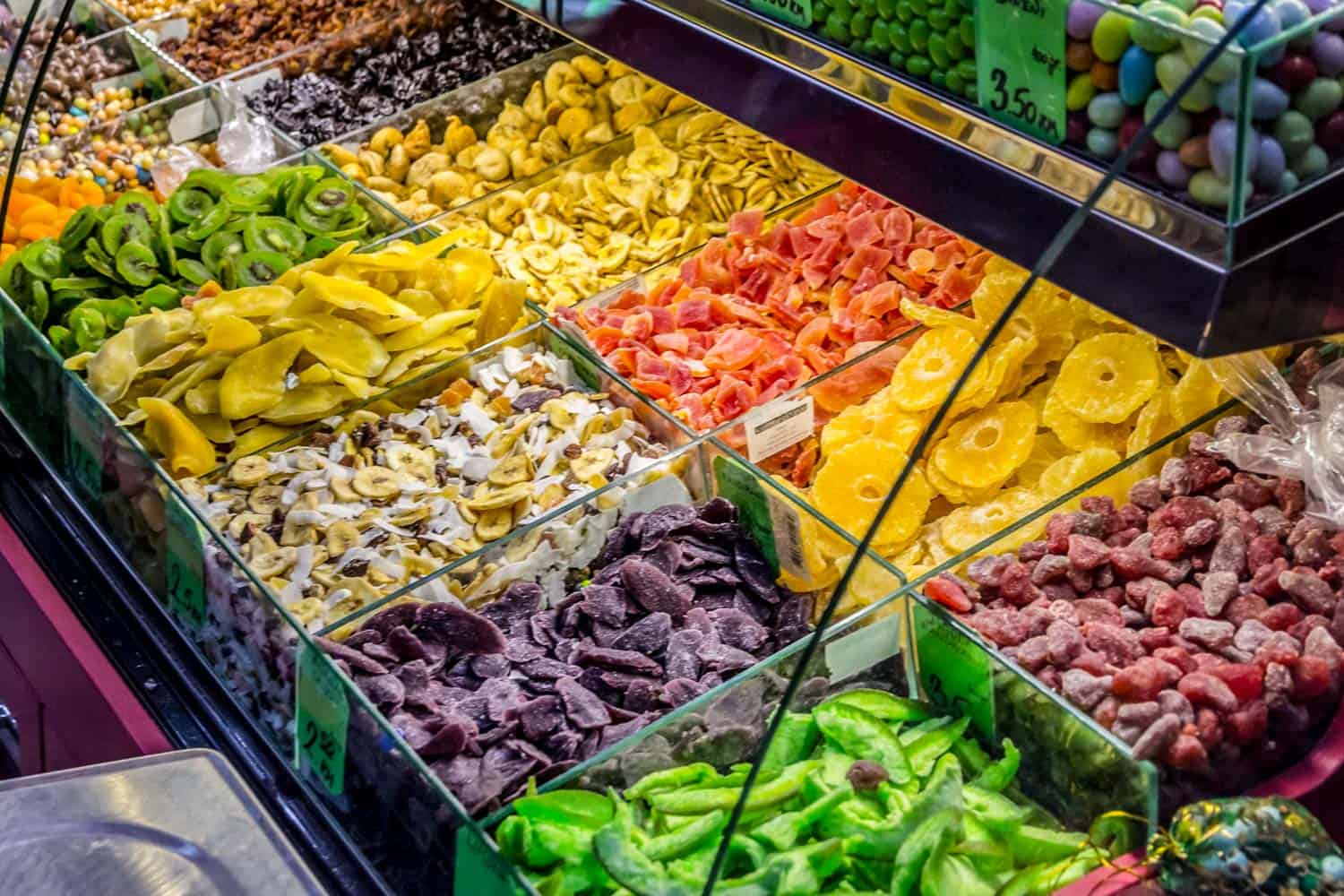
Sarajevo Food: Glossary Of Terms
There are several types of restaurants that serve traditional Bosnian foods. And they are often named according to the dish that they serve.
Buregdžinica
A sort of a restaurant/fast food joint that serves only traditional Bosnian pies.
Ćevabdžinica
A place where you go to eat ćevapi. These restaurants often serve other dishes as well – pretty much anything you can put on a grill.
Different Types of Restaurants in Italy
Aščinica
A restaurant that serves traditional Bosnian foods that are cooked. That’s where you will find most of the things mentioned here.
You can also find some of the traditional desserts in these restaurants.
Both buregdžinicas and ćevabdžinicas can be regarded as fast food joints. You go there for a quick bite, or to pick up food to take home. At least the locals do.
But aščinicas are definitely more like proper restaurants and not like fast foods.
You can find these restaurants throughout the city, but the best ones are usually in the Old Town (Baščaršija). For a truly authentic experience, you’ll want to get on the tram and get out at Sebilj.
From there, look for any one of these restaurants, depending on what you feel like eating.
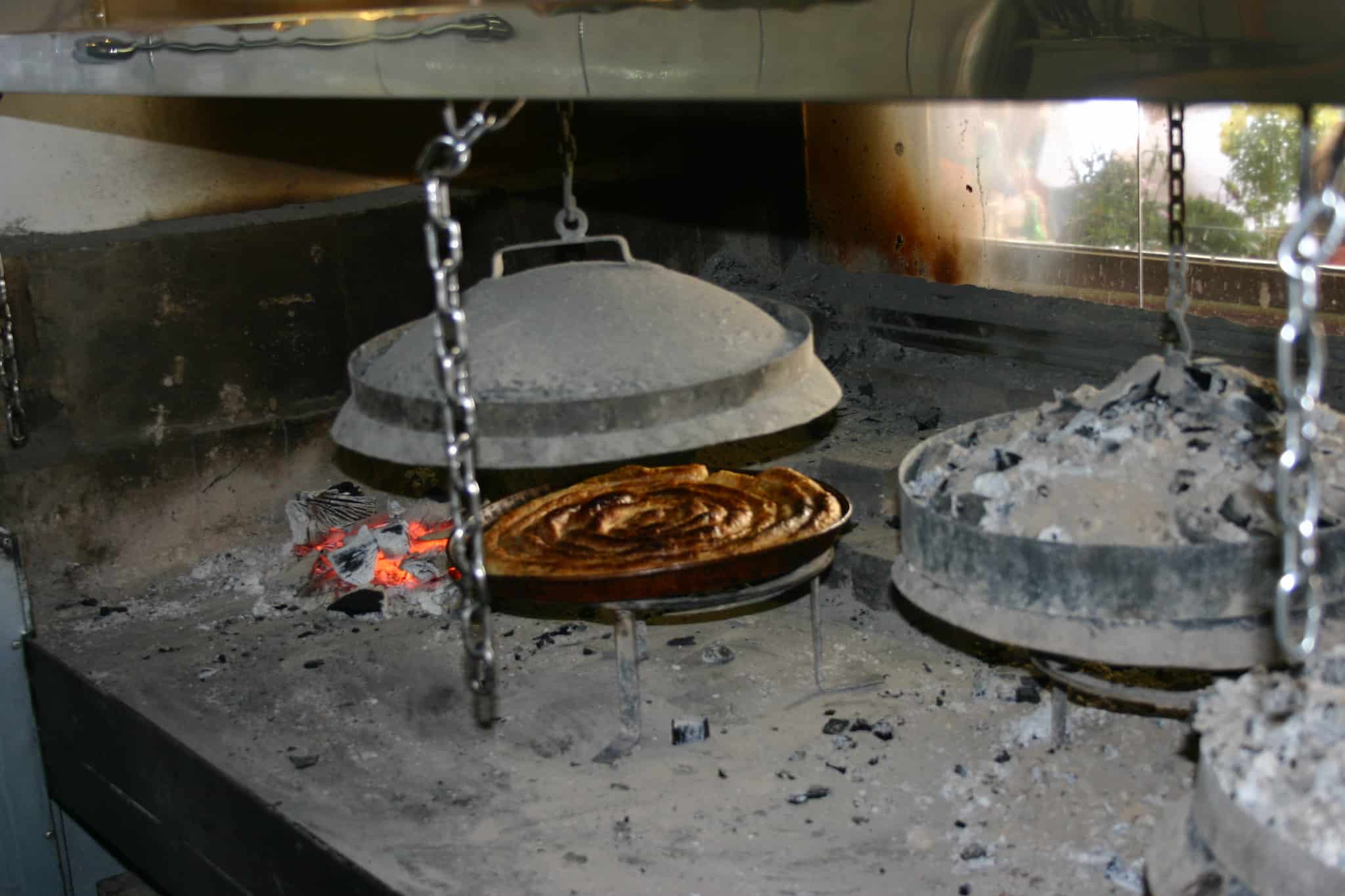
Best Things to Eat in Sarajevo
Ćevapi (Kebabs)
Ask anyone who’s ever been to Sarajevo what’s the one thing you must try there, and they will almost always tell you ćevapi. This traditional Bosnian food is a favorite, both among locals and tourists.
Ćevapi are made from minced meat, usually baby beef or veal. The meat is shaped into finger-sized portions, and then grilled. You can normally choose between a portion of 5 or 10 ćevapi, although some restaurants (ćevabdžinice) will offer a portion of 15 or even 20.
You will find the best ćevabdžinicas in Sarajevo Old Town. There’s literally one every 5 feet or so. And you can just follow the smell of grilled meat. Cevabdzinica Zeljo is one of the most popular spots for ćevapi in Sarajevo.
The kebabs are usually served in either half or whole somun (flatbread), with chopped onions, kajmak and sometimes chilli peppers.
It’s not exactly a healthy meal, but it’s undoubtedly delicious. Follow it up with a cold beer and one of the desserts here, and you’ll have a hard time getting up from the table.
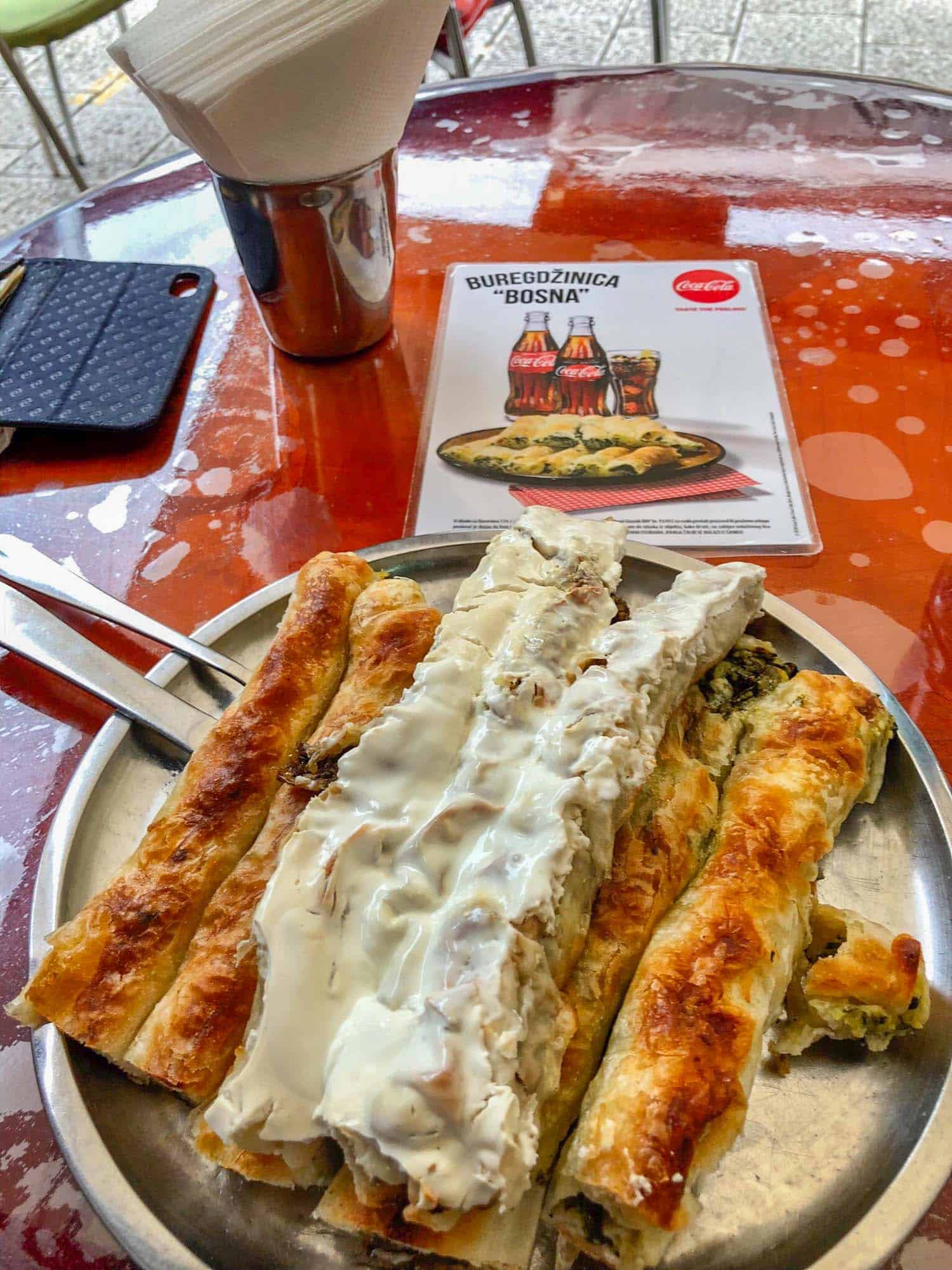
Pita (Bosnian Pie)
But not the American apple pie that you’re probably thinking of. The pies in Bosnia are made with paper-thin dough (yufka), and with various stuffing options.
And they are named depending on the stuffing.
Burek is a pie stuffed with meat originating from Turkey and considered a good street food option. Sirnica is a pie stuffed with cheese.
Zeljanica is stuffed with either spinach or chard. Krompiruša is stuffed with chopped potatoes and tikvenjača is made with chopped pumpkin.
And all of them are delicious.
You can try this meal in any one of the burgdžinica’s in the city, but you will find the best ones in the Old Town.
Buregdžinica is a restaurants that serves only Bosnian pies, which kind of gives you an idea of how popular this dish is.
You can even find small portions of these Bosnian pies in the local bakeries, but they won’t taste nearly as delicious as the ones in proper restaurants.
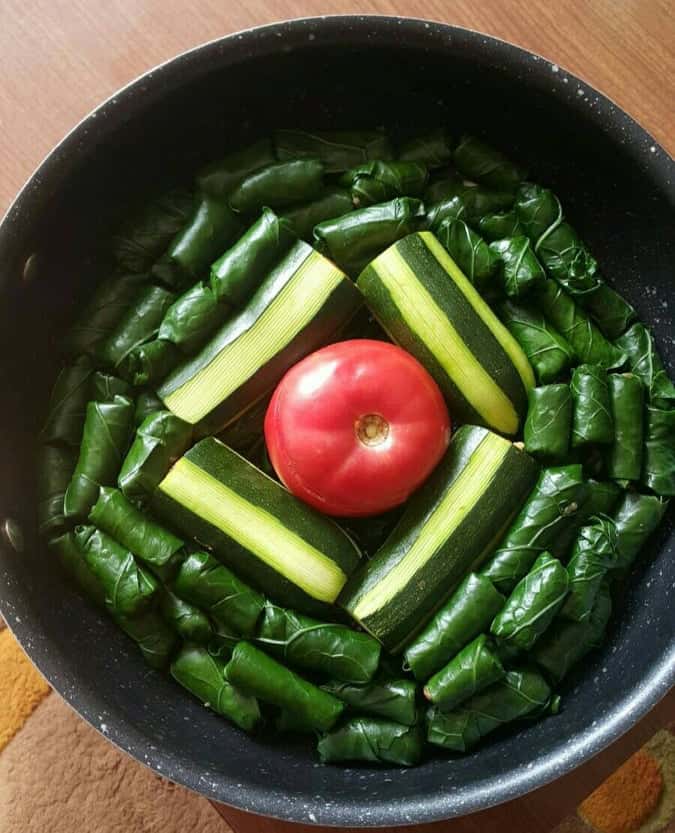
Sarma
Or dolma, as the Turkish call it. It’s one of the dishes that the Ottomans brought to the region, and it’s pretty popular both in southeastern Europe and in the Middle East.
To make this Sarajevo food, you need to mix minced meat with rice, and spice it up properly.
You then take pieces of the meat and wrap them in either sour cabbage or vine. There are a couple more versions, but these two are the most popular recipes.
This is then left to cook in water on low heat for several hours, until the sarmas are cooked through.
It’s a rather delicious meal, and you can find it in any one of the restaurants that serve traditional Bosnian food – aščinicas. Sarma is usually served with sour cream, as it really enhances the flavor of the dish.
It’s also sometimes eaten with a side of mashed potatoes. Definitely try out that combination if you get the opportunity.
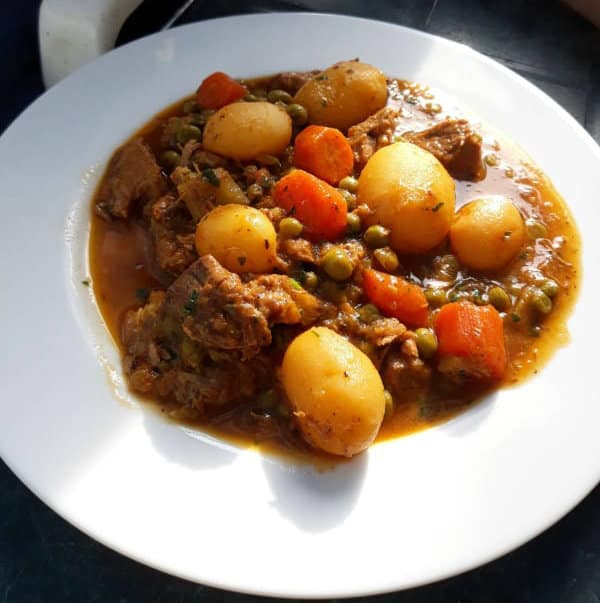
Bosanski Lonac (The Bosnian Pot)
The national dish of Bosnia. This is probably the most authentically Bosnian dish you can try. It has a rather interesting history – the dish is thought to have been created by coal miners.
They would get to the mines early in the morning, put whatever ingredients they had on hand in a deep ceramic or clay pot, and leave it to cook while they worked.
Traditionally, this dish was usually cooked in a fireplace or a pit in the ground.
By the end of their work day, the food in the pot would be cooked through and they could eat lunch.
The recipe for Bosnian pot varies a lot, depending on personal preference. The main ingredients are meat (usually several kinds of meat), potatoes, cabbage and carrots.
Both the meat and the vegetables are usually left in large chunks, so it takes several hours for all of these ingredients to cook through.
You can try this dish in any one of the aščinicas in the city.
Sogan-dolma
Sogan-dolma is a Bosnian food that consists of onion bulbs stuffed with minced meat. The stuffing is almost the same as the stuffing for sarma – minced meat, rice and lots of spices.
The name of this dish is of Turkish original. “Sogan” translated to onion, and “dolma” is a kind of a Turkish robe – shirt.
To prepare sogan-dolma, you need to peel an onion and remove its top and bottom parts. The onion then needs to be cooked until it is soft enough that the layers can be separated without breaking.
These layers are called “shirts”.
The “shirts” are then filled with the meat and rice stuffing and arranged in a pot. They are covered with water, spices, tomates, and usually the parts of the onion that weren’t used previously.
This is left to cook for several hours on low heat, and it’s usually served with thick sour cream (pavlaka) or mashed potatoes.
Stuffed Peppers
I warned you that Bosnian cuisine includes a lot of vegetables stuffed with minced meat. But the wonderful thing is that they all taste different.
This Sarajevo food is made with the same stuffing used in both sarma and sogan-dolma – so meat mixed with rice and plenty of spices.
But this time the meat goes inside bell peppers. The peppers are cleaned from their seeds, and their top parts are removed.
Some people will put the top back on the pepper while it’s cooking, and others will not – it’s a matter of personal preference.
The size of the peppers is also a matter of personal preference – some people prefer to use very small bell peppers, and others will use the largest ones they can find.
This dish is also cooked for a while on low heat, which allows all the flavors and juices to mingle and intertwine.
The stuffed peppers are served in the sauce they were cooked in, and with sour cream.
Meza
Meza is a bit hard to categorize – let’s call it a traditional Bosnian appetizer served cold. Or a party dish.
It’s usually served when a group of people get together, and they’re sitting down at the table chatting, and drinking rakija or beer.
This is one of those Bosnian foods that you can’t really get a recipe for, because it usually depends on what you have in the house.
The staple ingredients are suho meso (smoked beef; literally translated as dry meat), sudžuka (pepperoni) and cheese. Some people also serve tomatoes, cucumbers, olives, salami and eggs.
It really depends.
It is most often served when people are drinking alcohol, but that’s not exclusively the case. As a result, you can often order this dish in the pubs in the city.
And if you’ve had one beer too many, it’s exactly what you should do, as the fattiness of the meats and cheese really helps soak up that alcohol and prevent a hangover.
Klepe
Klepe are a traditional food in Sarajevo that include – wait for it – pasta stuffed with minced meat.
First, the dough is made, with flour, water, salt, a dash of oil and an egg. It is then rolled thinly (but not yufka thinly), and cut into little squares.
The stuffing is made with minced meat (traditionally a mix of veal and beef), finely chopped onions and lots of spices.
And a tiny ball of stuffing is put into each square of dough, which is then closed in a triangle shape.
Klepe are cooked in water, just like any other pasta. They don’t need to cook for too long, because there is not a lot of meat inside them and the dough cooks through rather fast.
Turkish Cacik
But the serving is where things get interesting. Klepe are usually served covered in yoghurt, with a special kind of “sauce” on top.
That “sauce” is made with butter, garlic and ground paprika. On its own, the sauce has an extremely strong flavor, so you only need two or three teaspoons in the dish.
You can try this dish in an aščinica in the city, and it’s definitely something that should be at the top of your list because delicious doesn’t even begin to describe it.
Begova Čorba (Bey’s Stew)
Begova čorba is a traditional fancy meal. It’s usually served for special occasions, as a warm appetizer. And it’s a soup.
The main ingredients of this Sarajevo food are chicken, carrots, okra, celery and parsley. All the ingredients are cooked together on low heat for several hours, until everything is cooked through.
Irish Guinness Beef Stew
The soup is very dense and has chunks of vegetables and meat, which is why people often call it a stew. It is also very rich in flavor and very filling.
It is traditionally served with a sour cream and a piece of flatbread.
You will find this dish in many of restaurants in the city. Even the non-traditional restaurants offer this appetizer, because of its popularity and significance in Bosnian tradition.
Roasted Lamb
This is a bit of a cheat, because you won’t find the best roasted lamb in Sarajevo.
You can find it, but it won’t be as delicious as the one you can have in in Jablanica, which is just a couple of hours away from the city.
But it’s without a doubt worth the drive if you’re a hardcore carnivore. Jablanica is a small town in the south of the country.
And all the best restaurants are located right on the highway that leads south.
Here’s the thing – lots of Bosnian people summer in Croatia. And when they are on their way to any one of the seaside towns, they will stop by in one of these restaurants for a portion of roasted lamb.
Or when they are returning home. Or both.
You will often see lambs roasting on a water spit in front of these restaurants. And you can purchase a whole lamb if you wish to.
But what I recommend is getting a single serving of roasted lamb and maybe a salad on the side.
You won’t even need a knife; in fact it’s best to eat the meat with your hands, because it is buttery smooth and just tears apart.
At least that’s what the locals do.
Tarhana
Tarhana is a tomato soup. It’s another Sarajevo food that was heavily influenced by the Ottomans, but it’s very popular in Sarajevo.
You can find it in lots of different restaurants, and it’s worth trying out.
Since it’s largely based on tomatoes, it can be very sweet and sour at the same time. And it’s usually of a rather thick consistency.
Tarhana doesn’t have long noodles inside it, as you might expect from a soup. Instead, it has tarhana pasta in it – tiny pasta for specifically this soup.
This soup is actually considered a miracle hangover cure in Sarajevo. And I can vouch for that personally.
So, if you wake up in the morning with a splitting headache after a drink too many, head out to the nearest traditional restaurant, and order a big bowl of tarhana.
You’ll feel like yourself again in no time.
Uštipci
Uštipci are one of the foods in Sarajevo that were heavily influenced by Yugoslavian cuisine.
They’re rather popular in Bosnia and Herzegovina, and also in the other former Yugoslavia countries.
Uštipci are basically just deep-fried dough, served with a lots of different side dishes.
They are a breakfast food, and you can actually find them in restaurants throughout the city. Even in some pubs and cafes.
There are two ways to prepare this dish. The more traditional way is to make a runny batter with flour, oil and some water.
The other way is to make a firm dough, roll it out and cut it into small pieces. The latter is also called peksimeti, and they’re a more speedy version of the traditional uštipci.
They are usually served with cheese, smoked beef, salami, mayo, ajvar and sour cream. In some restaurants/patisseries, you can even try the dessert version of this dish.
The main difference is that you won’t get any side dishes/condiments, but rather ušitpke covered with powdered sugar.
Kljukuša
If you’re in Sarajevo, you have to try the Sarajevo kljukuša! This is quite an interesting Bosnian food.
It’s one of those things you make for lunch when you neither have the time nor the money to cook a proper meal. But it still tastes delicious.
Kljukuša is made with grated potatoes, a little bit of flour, sour cream and lots of pepper and salt. All of those are mixed together in a bowl, and them laid out in a baking tray.
It is supposed to bake in a really hot oven until the top is a nice brown color, and it doesn’t hurt if the ends get a bit burnt.
So don’t be afraid if you see black spots in your kljukuša – it’s supposed to be like that. The high temperature makes it extremely crunchy at the top, while the bottom part stays soft and juicy.
Kljukuša is traditionally served with sour cream or yoghurt. You can find it in the aščinicas in the city, but also in some fast food restaurants and pizzerias.
Bamija (Okra)
Yes, I know okra is a vegetable. But bamija is actually the name of a Sarajevo food, a specific that is considered to have been the favorite of the Beys.
The dish includes dried okra (obviously), finely chopped veal, some carrots and a thick broth. ‘It’s one of those dishes that feels home-cooked (in a good way), even if you’re eating it at a very expensive restaurant.
Bamija is most often served at special events and holiday lunches. It’s considered a specialty, and quite frankly a luxury, because of the cost of the ingredients.
Because, to make this dish for 4 people, you need to spend at least 10KM on dried okra alone.
And in Sarajevo, that is equivalent to 10 loaves of bread or almost 5 litres of gas.
That’s also the reason why you won’t this dish just anywhere. You’ll need to look for a Bosnian restaurant that’s both traditional and a bit fancy.
Luckily, there’s a few of those in the heart of Sarajevo Old Town.
Bosnian Desserts
You didn’t think I was only going to talk about savory Sarajevo food, did you?
Of course not!
There are lots of desserts you should try if you’re ever in Sarajevo, and all you of sweet tooths are going to love them!
No meal is complete without something sweet and of course delicious Bosnian coffee.
Baklava
Baklava is a pastry dish that the Ottomans brought to Bosnia and Herzegovina.
It’s a staple dessert, one that is frequently served during celebrations and holidays.
Baklavas come in many different shapes and sizes, but most frequently they are cut into a lozenge shape.
The pastry is made with really thin yufka, similar to the Bosnian pies. The stuffing in traditional Bosnian baklava is made with walnuts, and soaked in agda.
They are very rich in flavor and rather filling. Actually, I don’t think I’ve ever managed to eat more than two very small pieces.
You can try this delicious dessert in most patisseries in the city, and you can even buy them in one of the local supermarkets.
But if you’re in the mood for a little experimentation, head to the old town or Sarajevo City Centre.
There you will find the Baklava Shop, where you can try more than 30 different types of baklava.
Now, you definitely can’t try them all, but you should at least try the almond and pistachio baklavas. And the choklava – a unique type of baklava made with chocolate.
Hurmašica
Hurmašica is a traditional Bosnian dessert made from butter, butterfat, flour and oil. It’s very fatty, so the servings are usually not too big.
The preparation of this dessert includes pressing the shaped dough onto a grater, in order to create a pattern on the top.
When prepared just right, hurmašica is an incredibly tasty dessert with a couple of different flavors and textured.
The top part is usually hard and a bit dry, but the bottom part of it is incredibly soft and juicy.
That’s because they are partially covered with agda, and left to sit in it. The bottom part remains in the sugar water until taken the hurmašica is taken out of the pan, which is why it is so juicy.
In Sarajevo, you can actually try quite a few different versions of this Bosnian dessert.
Obviously you should try out the traditional Sarajevo hurmašica first, and if you have room for more, also try the cinnamon or chocolate versions.
Tufahija
Tufahija is one of those Bosnian desserts that is very reminiscent of your grandma’s cuisine – at least for Sarajevans.
These are literally hollow apples poached in agda and stuffed with a mixture ground walnuts and the sugar water.
The dish is served in a deep bowl or even a large cup, with a bit of agda inside. And the apples are covered with whipped cream, which makes them taste even better.
This is very traditional dessert, so you won’t find it in the more modern patisseries.
But you can easily find it in the restaurants in Baščaršija.
Kadaif
Kadaif is another one of those special-event dishes. It is one of the most popular desserts for Bayram – the muslim holiday that concludes Ramadan.
The main ingredient of this dessert are kadaif noodles. This is very thin type of noodle pastry, which is made from water and flour.
The dish is made with these noodles, ground walnuts and raisins. Even though the traditional recipe doesn’t include almonds, some people like to add it to the dish.
Since those ingredients are very dry on their own, it won’t surprise you that kadaif is covered with agda while it is baking.
This makes the dish juicy and soft, but leaves the top layers crunchy. To try kadaif, you will need to find a more traditional patisserie.
Which won’t be an issue, because there are plenty of those in Sarajevo Old Town.
Tulumbe
Tulumbe are definitely my personal favorite dessert. They are basically fried dough, and they’re similar to churros in shape.
The biggest difference between the two desserts is that churros are crunchy, and tulumbe are rather soft.
That’s because after they are fried, they are left to soak in agda for at least an hour, until they have soaked it up. This makes them really soft and juicy, and just extremely delicious.
You can have tulumbe in almost every patisserie in the city. You can also buy them in a local supermarket, but they won’t taste as good.
The interesting thing about this dessert is that it comes in lots of different sizes.
Sometimes you’ll be served with one or two very large tulumbas, and other times you will get a bunch of bit-sized ones.
The latter tastes better at least for me, and you can find those in the Saraj patisserie in Sarajevo town centre.
Just be aware that once you start eating them, it’s really hard to stop.
Jabukovača (Bosnian Apple Pie)
If you’re thinking of a double-crusted apple pie, you are way off. Bosnian apple pie is made with yufka, and it is about a hundred times more delicious.
I’m a huge fan of chocolate desserts, and this one of the few non-chocolate dishes that I actually enjoy.
The filling of Sarajevo jabukovača is traditionally made with grated apples, ground walnuts and vanilla sugar.
It’s incredibly soft and juicy, because it is (shockingly) covered in agda after baking.
The pie will soak up almost all of the juice, which makes the yufka very soft and chewy, with just a little bit of crunch at the top. I
t’s usually served with vanilla ice cream, which melts all over the hot pie.
The best thing about this dessert is that you can find it in almost every restaurant in the city, regardless of type of food they serve.
Šampita
Šampita is a whipped meringue dessert that is very popular in the countries of former Yugoslavia. It’s kind of a cake, and it is served in most patisseries in the city.
Šampite are rather light and airy, but they are very sweet. They feature a very thin sponge, which is made from flour, egg yolk, milk, sugar and oil. The upper part of the cake is called “šam”, and it is made from egg whites and sugar. But what makes this cake stand out from a traditional meringue, is that agda is added into the whipped mixture.
This changes the consistency significantly, as it makes it tackier and a bit more dense. They are usually sprinkled with powdered chocolate or cocoa.
You can find this dessert in many patisseries and cake shops throughout the city, even in some bakeries.
But I don’t recommend that last one, as those šampitas don’t taste nearly as awesome as the real ones.
Anna was born to travel the world having studied languages all her life. Although she has traveled the world, she now calls Switzerland home and spends her time writing about her experiences on her travel blog with her husband. Follow their adventure on Twitter and Pinterest.
Pin it: Food in Sarajevo
Photos: Ćevapi (c) Ruben and Tina, Pita (Bosnian Pie) (c) Melissa Enderle, Begova Čorba (Bey’s Stew) (c)Nurettin Mert AYDIN, Baklava (c) Marc Kjerland, aerial photo of buildings during daytime (c) Pika Žvan, crowd surrounded by stores near brown tower (c) Darcey Beau , shallow focus of nuts (c) Haris Memović , different vehicles near road surrounded with tall and green trees under orange skies(c) Peter Donko , Sarajevo Burek (c) aiva, candied fruit (c) Valinor Photography, Coffee Set (c) Kim and Clark Kays,
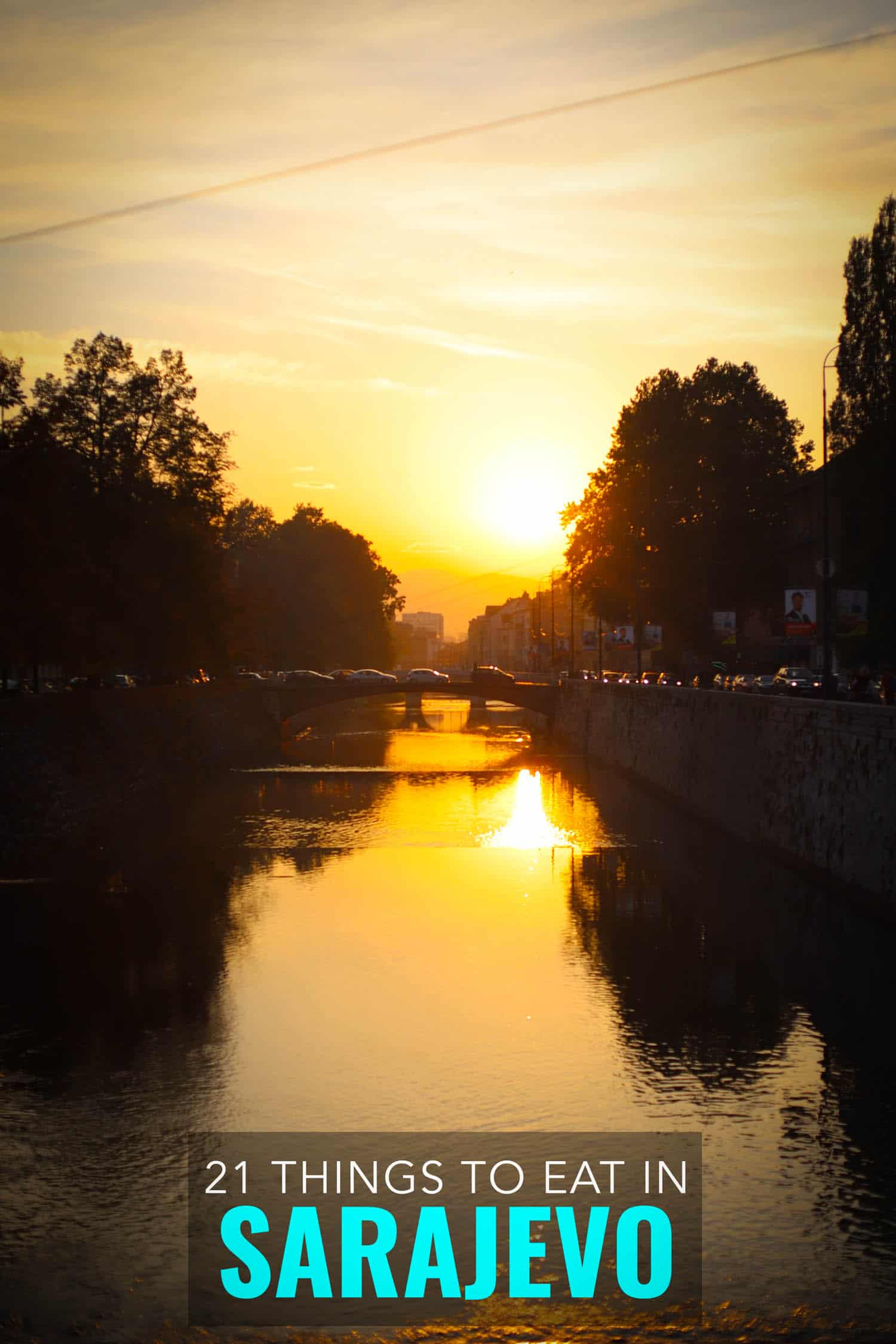
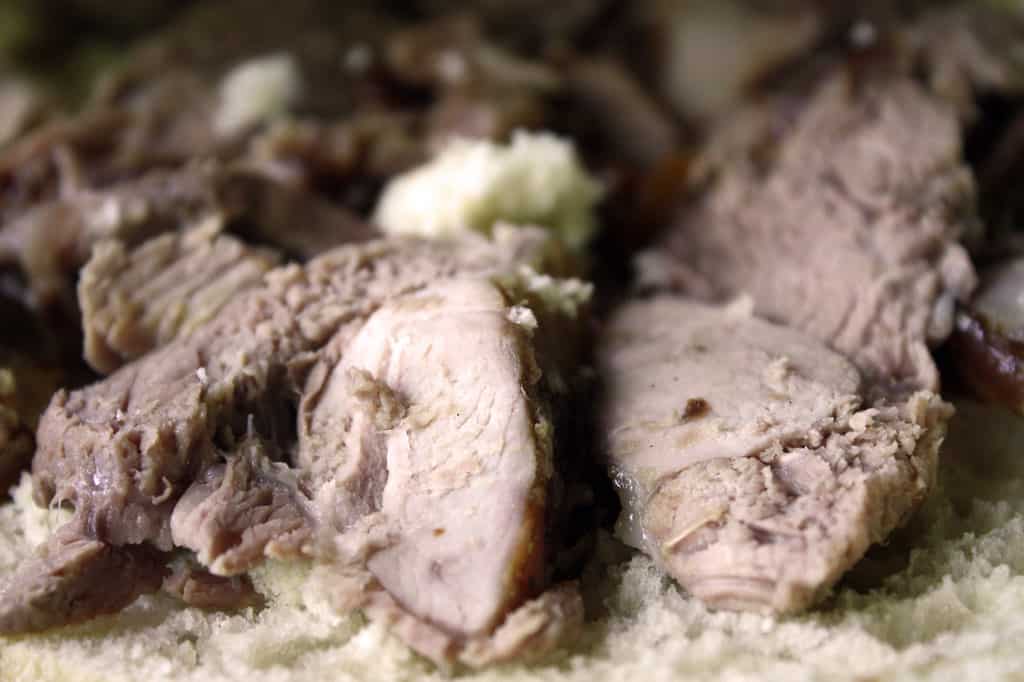
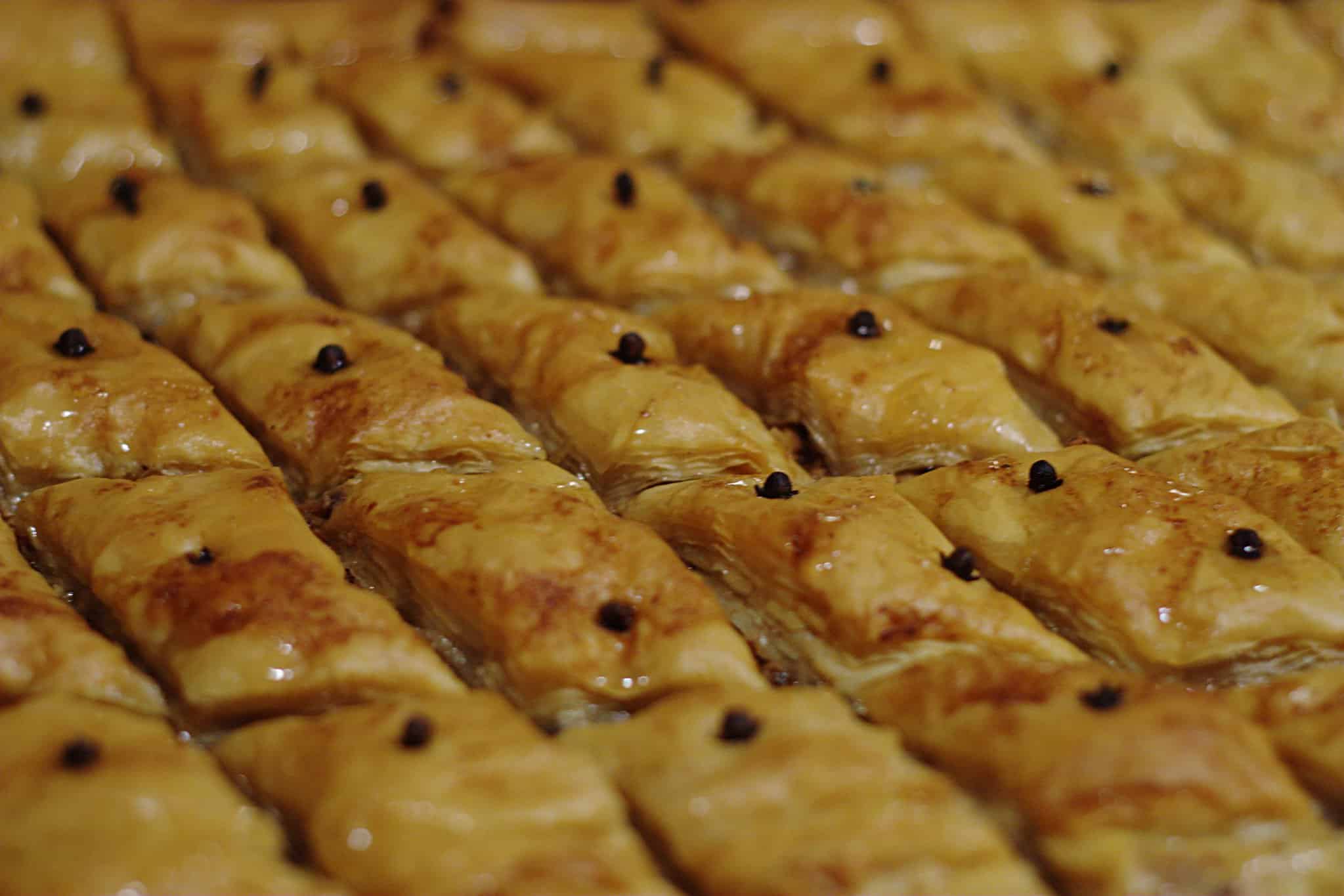
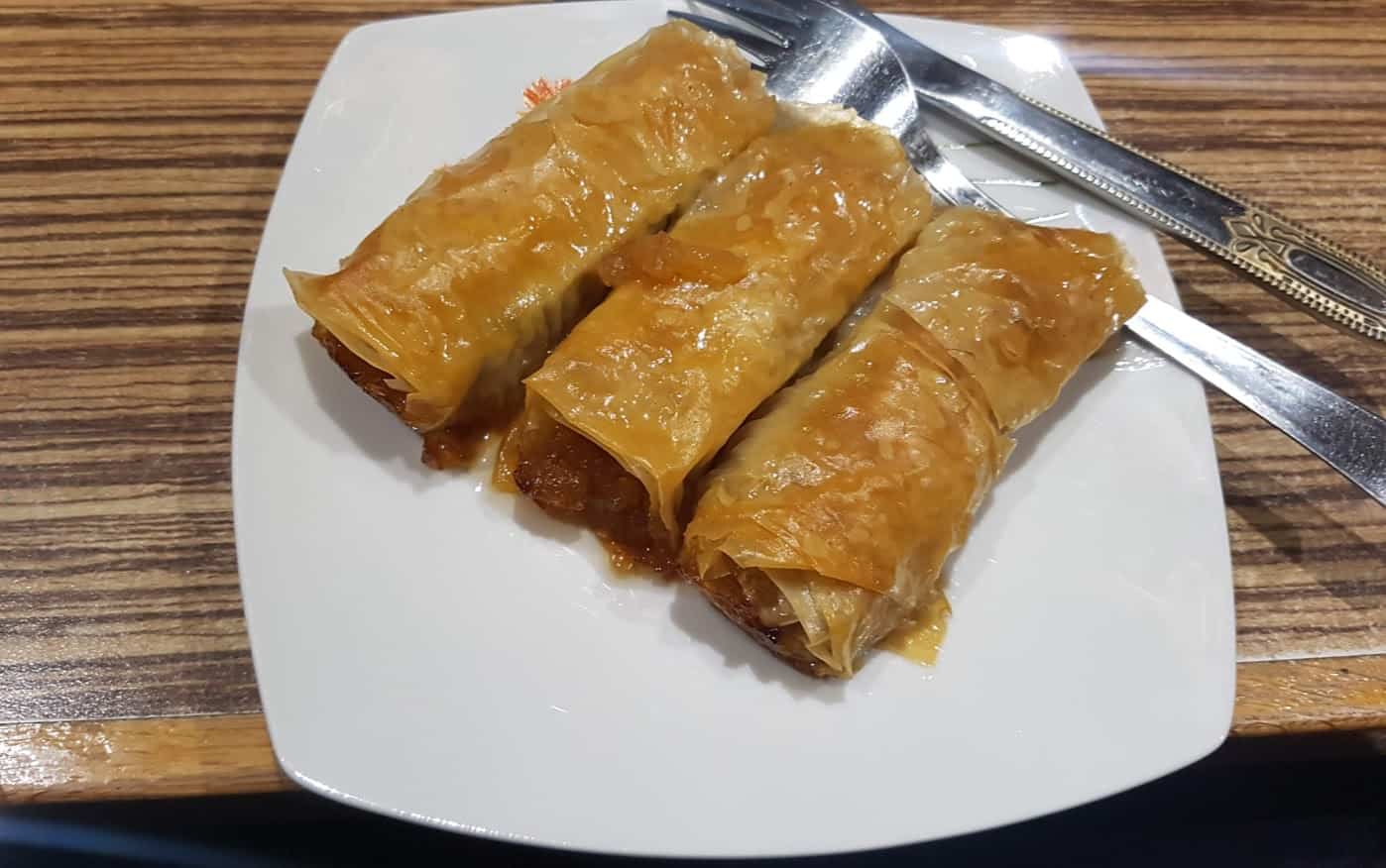
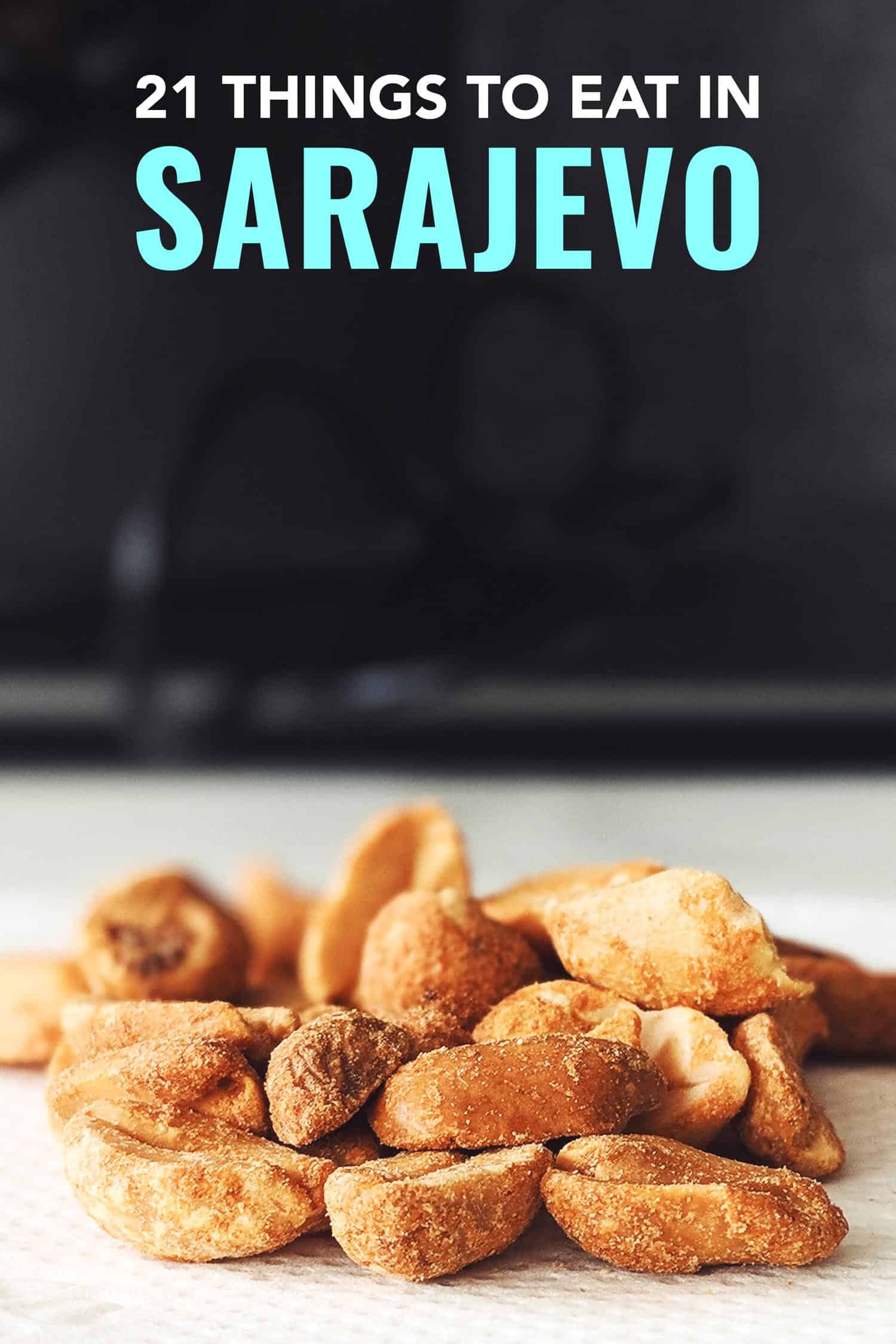
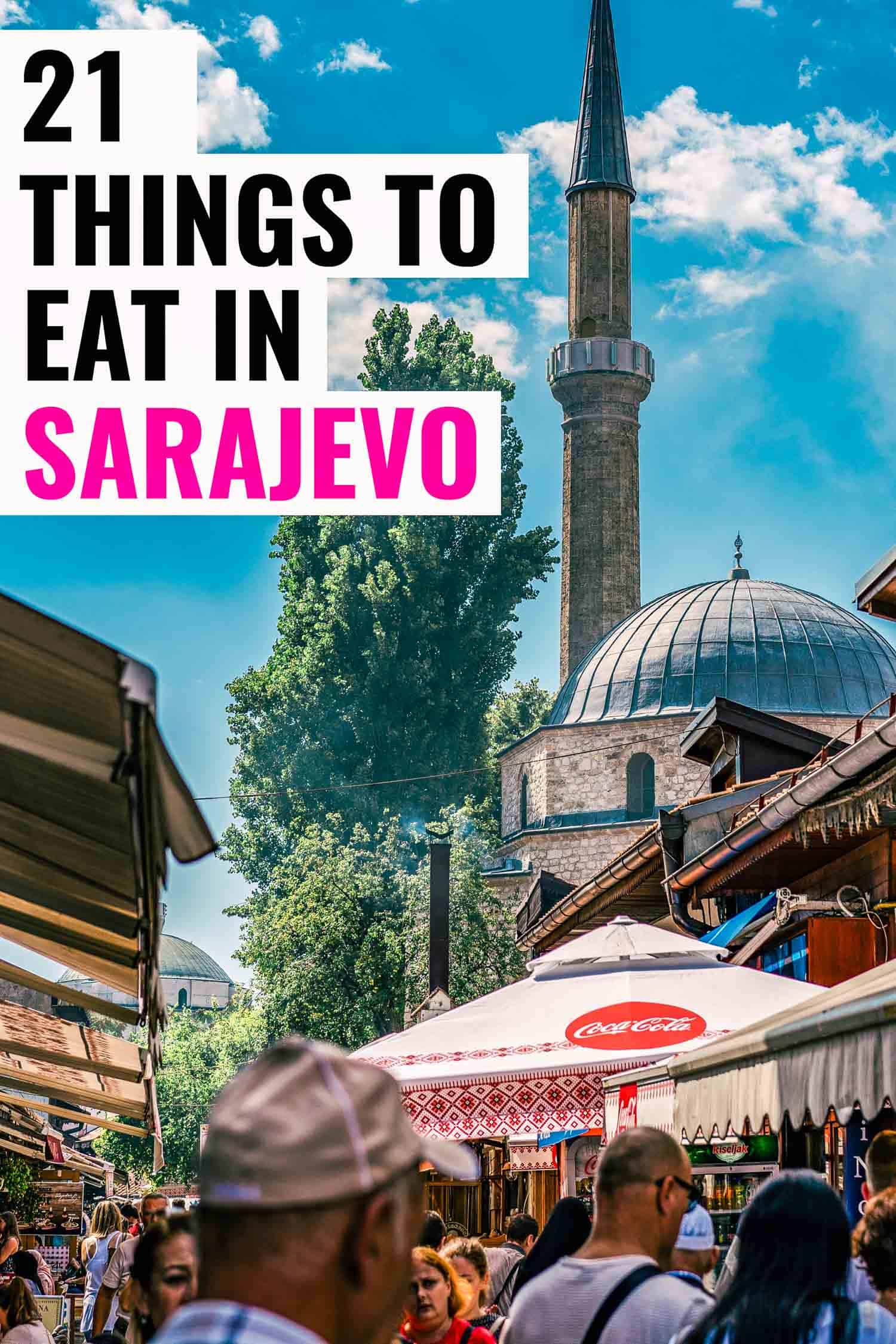
Awesome read!! This looks pretty amazing 🙂
Wow what article its awesome … i love this because i love food..
Wow!! those food seems so delicious! my mouth is full of water. I would love to travel to Sarajevo just to try those foods rather than sightseeing and other activities. Thanks for writing, keep on sharing.